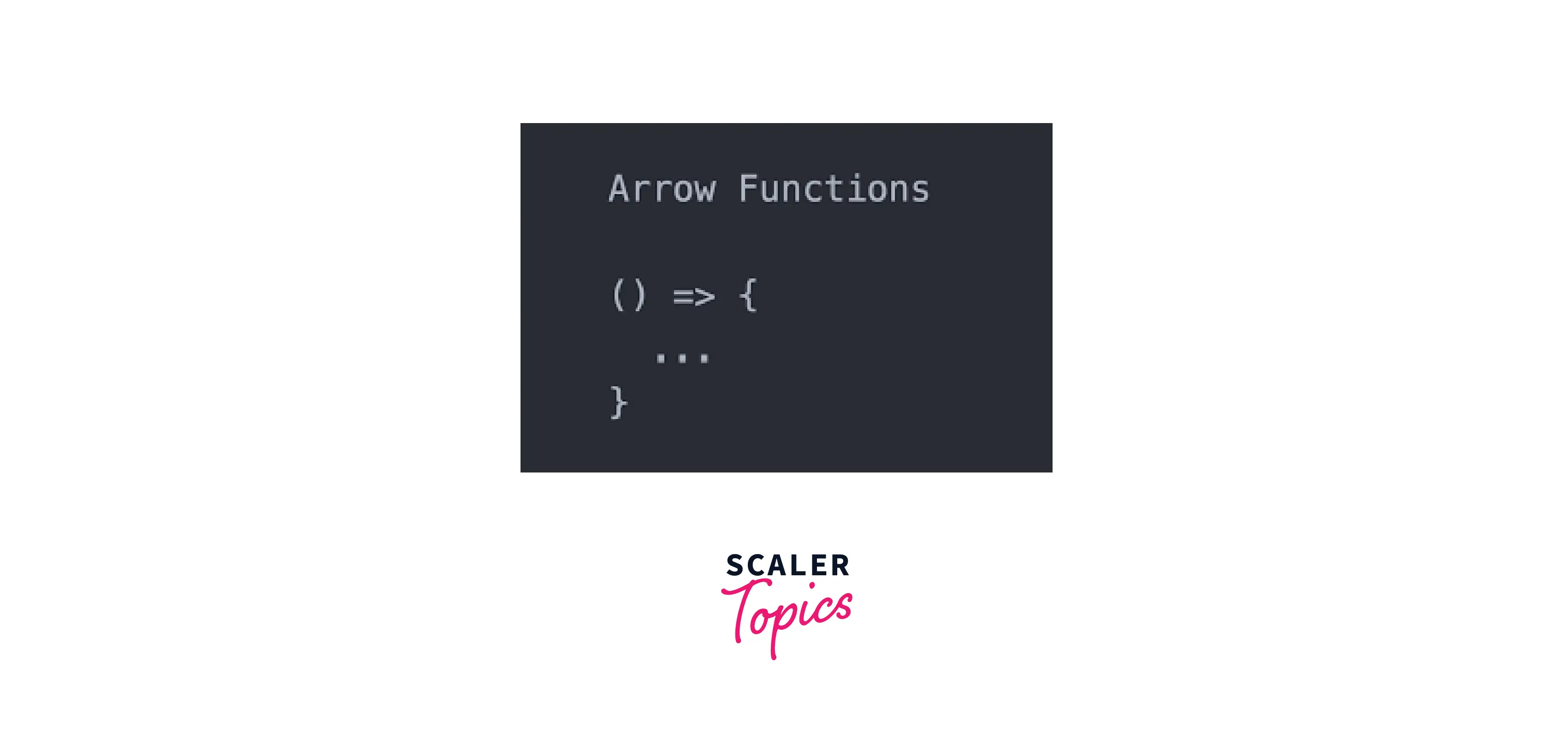Working with Arrow Functions
Overview
Arrow functions, a new way to write anonymous function expressions are similar to lambda in other programming languages. It is also called the fat arrow. The arrow function has a lexical scoping of the this keyword. Because of arrow functions, we do not need to type the word function multiple times. We can use this method whenever we want our code to be short and not call the function each time.
Introduction To Arrow Functions In Typescript
Before understanding arrow functions let's understand the need for arrow functions in typescript. Let's see how to write a function without arrow functions:
This is how we used to define a function without the arrow function but now with the help of the arrow function, we can define a function more shortly. Let's see an example where we will define a function with an arrow function:
In the above example, we can see that we have defined the function in a shorter way using the arrow functions. It helps us to avoid writing the function keyword multiple times.
Syntax
Now let's see the syntax of typescript arrow functions:
By using the => (fat arrow) we don't need to use the function keyword. The parameters are passed in the brackets (), and the function expression is enclosed within the curly brackets {}. Till now we have clearly understood the use of typescript arrow functions and we are clear with the syntax of how to implement the arrow function in our program.

What is an Arrow Function?
Arrow functions were introduced in ES6. We know that functions are the building block to creating and combining relatable bits of code. Typescript arrow functions is one of the efficient and easy ways to create functions. In simple words arrow functions (=>) are a concise way of writing a function expression. Arrow functions are similar to lambda in other programming languages. Now let us see some examples of arrow functions with parameter and without a parameter.
Arrow Functions With a Parameter:
The following program is an example of an arrow function with a parameter:
Output
In the above program, the result is an arrow function the variables num1 and num2 with the type number are the parameter types, then the number after the parameters is the return type of the variables, then the (=>) fat arrow or arrow notation separates the function parameters and the function body. Run this code in your editor/ compiler for a better and clear explanation.
Arrow Functions Without A Parameter
The following program is an example of an arrow function without a parameter:
Output
We can see that in the above program no parameters are passed and also if the function body consists of only one line then also there is no need for the curly brackets and the return keyword. Run this code in your editor/compiler for a better and clear explanation. Now let us see some more examples:
1. Arrow Functions With No Parameter And No Return Value
Let's see an example of a function with no parameters and return values:
Output
In the above program, the variables a and b are not given to the parameters but are directly accessed by the function itself. The function does not return any value but prints the output to the browser console.
2. Arrow Functions With No Parameter But Returns Some Value
Let us see an example of a function with no parameters but some return values:
Output
In the above program, the variables a and b are not given to the parameters but are directly accessed by the function itself. The function returns some value whenever we print it.
3. Arrow Functions With Parameters But Returns No Value
Let's see an example of a function with parameters that returns no value:
Output
In the above example we can see that the arrow function has parameters but no return value, the function does not return any value but prints the output to the browser console.
4. Arrow Function With Parameters And Returns Some Value
Let us see an example of arrow functions with parameters that returns some value:
Output
In the above example, the result is an arrow function. (a
Arrow Functions in a Class
We can also include the arrow function as a property in a class. To understand it more clearly let us look at an example:
Output
In the above code we have implemented the arrow function property in a class and also added a new employee list with name and employee no and displayed it. Run this code in your editor for a better and clear explanation.
Conclusion
- Arrow functions cannot be used as constructors.
- We can use arrow functions with various methods of the array like map(), and reduce() because with the help of arrow functions one can read and write the code more easily.
- Arrow function should not be used as a method.
- Arrow functions reduce a lot of code and make it easier to read.
- We can't use an arrow function when a dynamic context is required because arrow functions use a different mechanism and thus it is not defined in a dynamic way.
- Arrow functions cannot be used as generators because the yield keyword may not be used in an arrow function's body except in the case when it is permitted within functions further nested within it.
